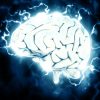The Human Brain and Its Magnetism
Since the early 1990s, scientists have known that the human brain contains magnetic particles deep within the organ’s tissue. The problem: we still don’t know what they’re for.
In a lab located in the remote forests near Munich, Germany, scientists are deep diving into the folds of the human brain to uncover the purpose of these magnetic particles. What could be the function of these mysterious particles? Some scientists considered that the particles served some biological function in the past while others suggest that the buildup of particles may have just come from pollution from our environment. Now, German scientists are leaning towards the first explanation.
New Discoveries
After doing studies on seven postmortem brains, researchers have found that certain parts of the brain are more magnetic than others meaning these parts contain more magnetic particles. Furthermore, the seven brains studied all had very similar patterns of distribution meaning that the magnetic particles aren’t a result of the environment but rather they serve a specific biological function.
Joseph Kirshvink, professor of geobiology at Caltech who was not part of the initial study said that this new research is “a very important advance, as it rules out obvious sources of external contamination” from pollution. While contamination is always a possibility, it “would not be the same in multiple individuals.”
Studying the Brain
To determine the purpose of these magnetic particles and how they came to find themselves in the brain, scientists must look at individual slices of the brain in an isolated place, far from the contamination of car exhaust and cigarette ashes. The lab is situated among trees with leaves that are known to absorb magnetic particles, preventing any environmental contamination from taking place.
After taking a controlled reading of the brain, the brains were then magnetized using very powerful magnets. This way, if magnetic particles were present in a slice of the brain, they would show up on the magnetometer. In all seven brains, most sections of the brain could be magnetized but the brain stem and the cerebellum had the greatest concentrations of magnetism.
It is still unclear why these patterns are arising but because all of the brains studied followed the same patterns, it seems that the magnetism serves some biological purpose. Researchers even found that humans potentially have magnetoreception abilities. Our brains are still a mystery even to us! As we continue to unravel the puzzles, it seems that more puzzles continue to arise. Hopefully, someday we’ll have uncovered all the secrets of magnetism and the human body.
To stay up to date on the latest magnetic news, make sure you’re following along with our News & How-To’s blog, our Facebook, and our Twitter.

